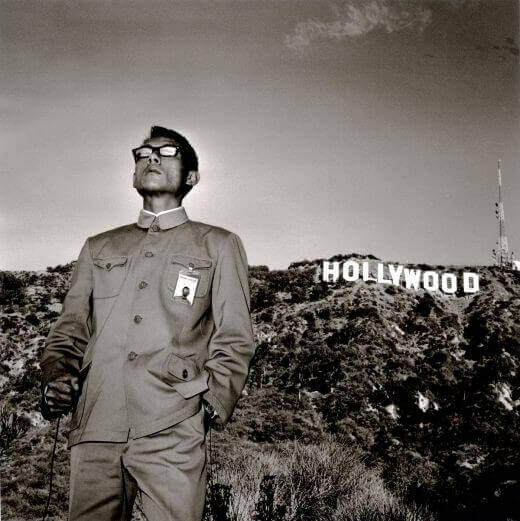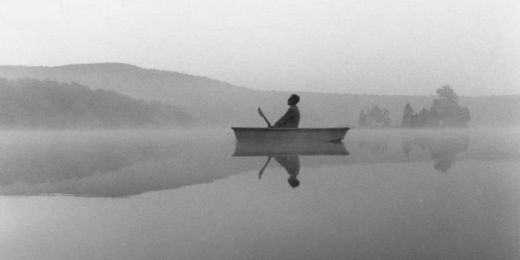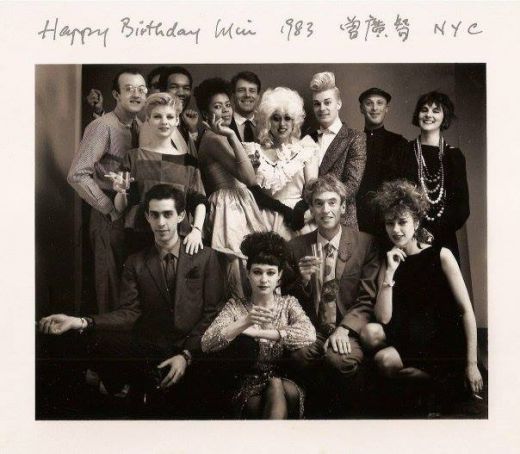
Tseng Kwong Chi, Hollywood Hills, CA, 1979. Courtesy of the Estate of Tseng Kwong Chi
Oliver Sanchez, artist and founder of Miami’s Swampspace, appeared suddenly from the crowd, producing in me that jarring comfort that comes with seeing someone from your own city, unexpectedly, in a place you’ve never seen them.
He brought me over to an opening for an exhibition across the street at NYU’s Grey Art Gallery. For the artist Tseng Kwong Chi, it is serendipitously titled Performing for the Camera.
Born in Hong Kong in 1950, Tseng was a prolific photographer and participant in the downtown Manhattan art and club scene of the 1980s, up until his death in 1990. His archive of images includes very well known artists of that art historical moment (Keith Haring, Andy Warhol, Jean-Michel Basquiat, et al) alongside those lesser knowns, unknowns, the other-wise.

Lake Ninevah, Vermont, 1985
A comment on his own national identity and the perceptual faults of stereotyping — this soft exercise in Cold War era performance translated into real power. After being mistaken as a Chinese dignitary at a restaurant, Tseng crashed an opening at the Metropolitan Museum of Art for a Ch’ing dynasty exhibition, and partied and posed with the elite celebrity class, masquerading as a hip Chinese Communist official.
The images, which he shot by himself, depict a sort of proto-queer transnationalism, a consumerism of the self, its image, and jet-age privilege. He dons reflective shades in front of landmarks such as the Eiffel Tower and World Trade Center, while others are set in spectral landscapes, fields of flowers and misty rivers. They show a Maoist administrator turned tourist, in his words, “an inquisitive traveler, a witness of my time, an ambiguous ambassador.”

Top row, left to right: Keith Haring, Kwong in glasses with clicker, Juan Dubose (Juan One), Min Thometz (Min Sanchez), Cecille Swayneson, John ?, Katy Kattleman (Katy K), John McLaughlin (John Sex), Dan Friedman, Girl ? / Sitting left to right: Oliver Sanchez, Ann Magnuson, Guy ?, Samantha McEwen. Photo courtesy of Oliver Sanchez
When asked later about Tseng (people who knew him referred to him as Kwong), Sanchez says:
“Each of us ought to have a secret yearning. For Tseng Kwong Chi, it was to germinate the planet in the most innocuous way. His passion was to impress upon us the illusive nature of perfection. From the grandeur of the Badlands to the serenity of a frosty canadian lake, he seduced us subliminally. From the rockets of NASA to the hallowed halls of DC, he wowed us with confidence. But alas the scourge of AIDS came to pass. So it was that his ashes were cast into the ocean from the seawall of the Statue of Liberty Island. Nearly three decades later we celebrate that which is not human. We pay honor to his depth of field.”
A very special thanks to Oliver for bringing me to the show and sharing, as he does.










